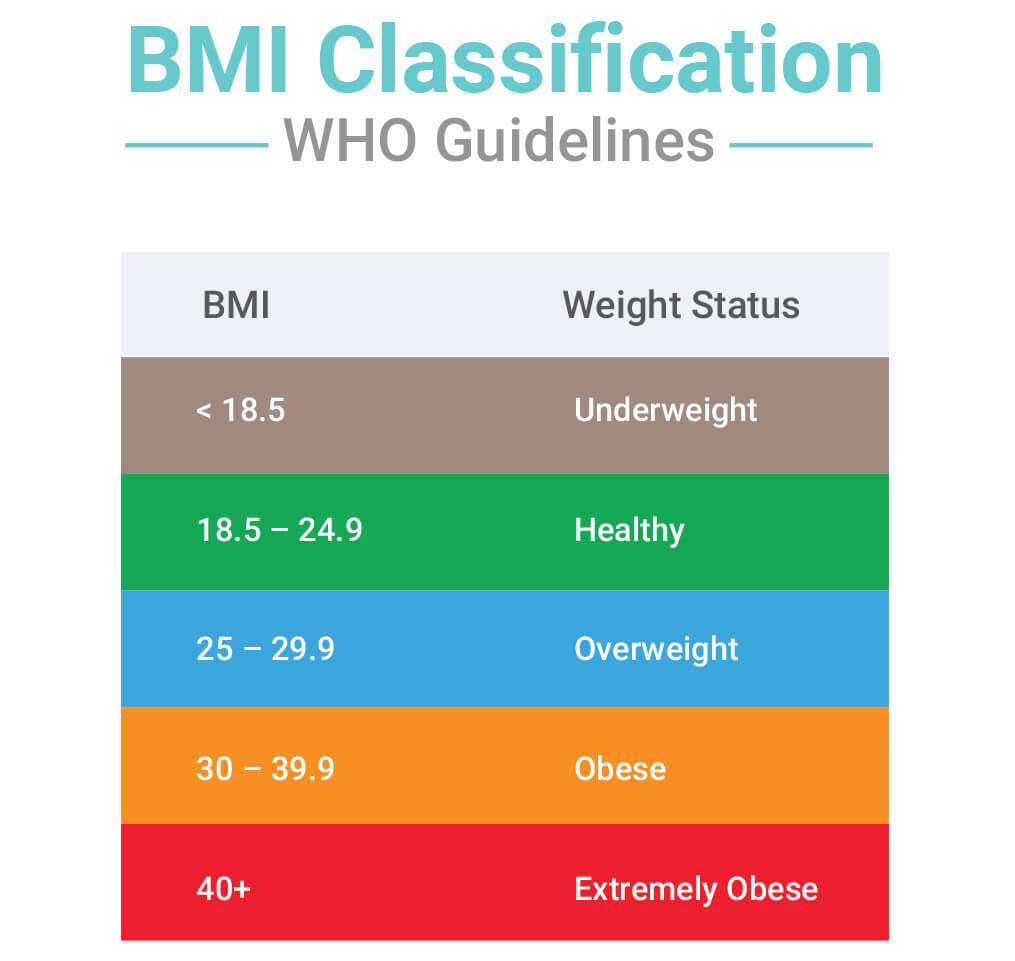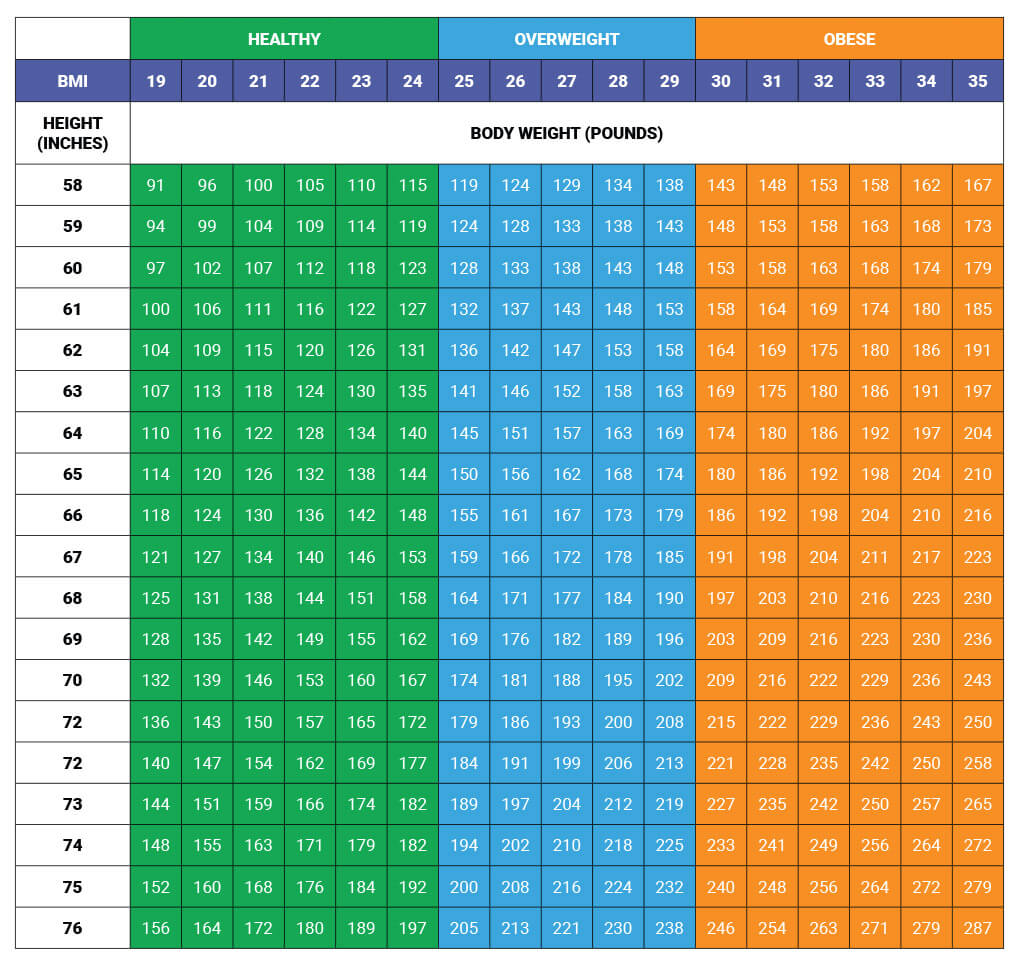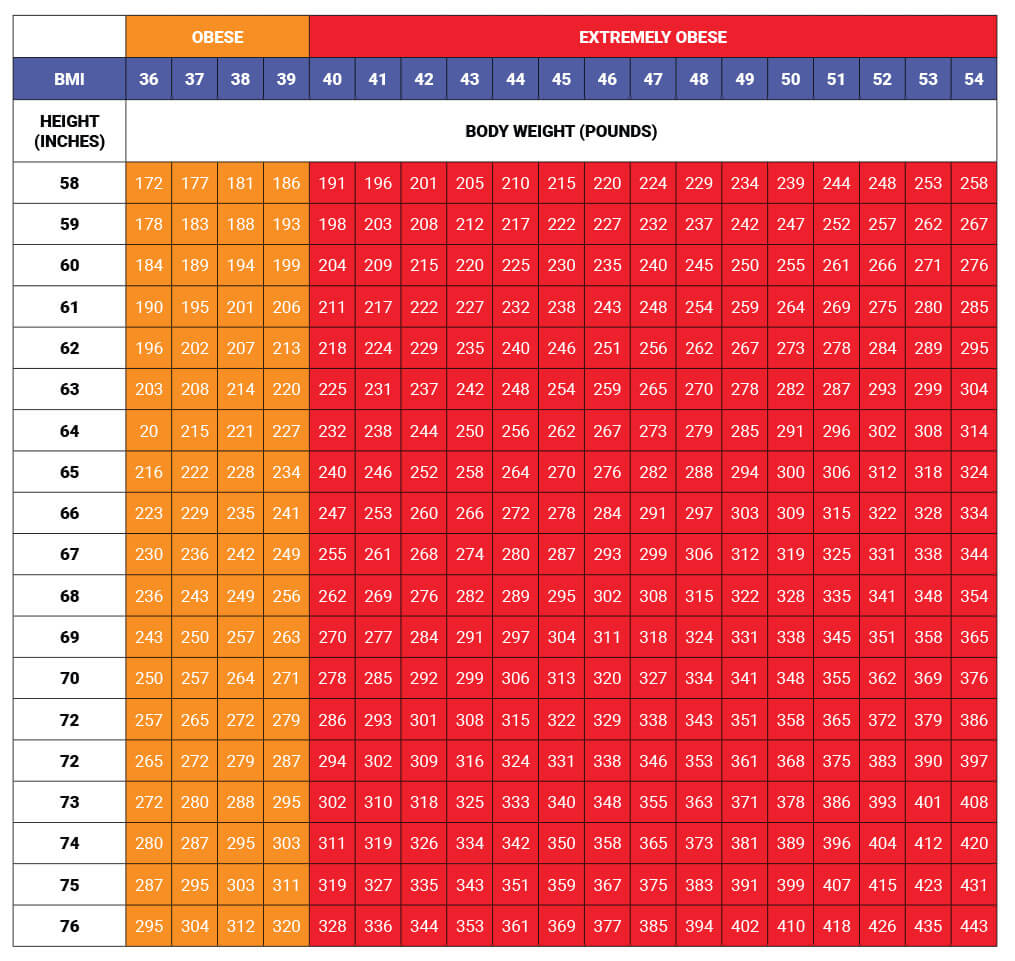What’s BMI, BMR, and Lean Body Mass Versus Fat Body Mass?
There’s been more interest than ever in BMI numbers (body mass index numbers) since the coronavirus outbreak of 2019 for one important reason: obesity (one of the BMI weight status markers) has been connected to a higher risk of severe COVID reaction. But that’s not the only reason to be curious about BMI values. When you start investigating your health or weight loss, you’re likely to come across the terms BMI, BMR, lean body mass, and fat body mass.
These terms refer to important biomarkers that help you understand your body’s composition and gauge whether it needs adjusting, presumably through diet, exercise, or both.
Read on for clarity and help determining your own BMI percentile, BMR, and body mass composition.
What is BMI?
BMI stands for “Body Mass Index,” which is a standard measurement of a person’s weight with respect to her or his height and also an indication of health risk based on weight.
Your BMI number is based on a simple mathematical calculation and is a common indicator of your total body fat and whether you qualify as “underweight,” “normal,” “overweight,” or “obese,” based on World Health Organization (WHO) guidelines.
The higher your BMI score, the greater your total body fat percentage.
Here’s the breakdown of BMI percentiles for an adult, according to the World Health Organization (WHO):
Thus, a “normal” BMI score, or a normal weight range for a person’s height, is between 18.5 and 24.9. Below the “normal” range is underweight and above is overweight.
How to Calculate Your BMI
There are two ways to determine your BMI — through a table offering you an estimate or through a mathematical formula, which will give more concise results.
BMI Estimate
To estimate your BMI, match your height in inches to weight in pounds in the following table from the National Institutes of Health (NIH) National Heart, Lung, and Blood Institute (NHLBI):
Body Mass Index Table 1 (for people with BMI of 35 or less)
Body Mass Index Table 2 (for people with BMI greater than 35)
BMI Calculation
There are online BMI calculators that calculate BMI, but you can calculate your BMI with the following mathematical formula provided by the CDC:
BMI = (weight in pounds) ÷ (height in inches²) x 703
Here’s an example of how to use the calculation, using a person who is 150 pounds and 65 inches tall:
- First, square the height in inches (65² or 65 x 65 = 4225).
- Then divide the weight in pounds (150) by the height squared (4225); so that’s 150 divided by 4225 = 0.03550296.
- Now, times the result by 703 (0.03550296 x 703 = 24.9585799). Thus, the BMI for a person who is 150 pounds and 65 inches is 25.
The metric equation is as follows: BMI = (weight in kilograms) ÷ (height in meters²)
Risks for People with a High BMI
What’s the obsession with BMI? It has everything to do with optimal health versus health problems. An ideal weight keeps you in a better position for better health conditions, while a heightened amount of body fat (i.e. obesity) is attributed to higher risk for a variety of undesirable health conditions. Following are a variety of increased risk factors that accompany a high BMI:
- high blood cholesterol or other lipid disorders
- type 2 diabetes
- heart disease / cardiovascular disease
- hypertension
- stroke
- high blood pressure
- certain cancers
- gallbladder disease
- sleep apnea and snoring
- premature death
- osteoarthritis and joint disease
Now that you understand BMI, let’s explore BMR.
What is a BMR Basal Metabolic Rate?
Your body burns a specific number of calories to perform its basic, life-sustaining functions, such as breathing, processing nutrients, producing cells, and circulating blood. The number of calories your unique body needs to sustain its most basic, essential functions is your BMR or basal metabolic rate.
On an average daily basis, you burn more calories than your BMR just doing normal daily activities like working, walking, cleaning, or gardening. For the average person the BMR accounts for between 60 to 75 percent of your daily Total Energy Expenditure (TEE).
Another term you might hear in relation to BMR is RMR (resting metabolic rate); they’re often used interchangeably. What’s the difference between BMR and RMR? Not much. Your BMR is the minimum number of calories your body needs to function, while your RMR (or REE, resting energy expenditure) is the number of calories your body burns at rest. In other words, they’re essentially the same thing but looked at through a slightly different angle.
In either case, your BMR can be used to help you gain, lose, or maintain your weight. By knowing how many calories you burn, you know how many to consume.
How to Calculate your BMR
There are a number of BMR formulas; however, the most recognized and accurate formula for calculating BMR is the Mifflin-St Jeor equation. Because of its accuracy, here at Keto-Mojo, we use this formula for our MyMojoMacros calculator to calculate your daily calorie burn based on your activity level.
The calculation is fairly straightforward. The results indicate how many calories you need daily for your body to perform life-sustaining functions:
BMR for Men = (10 x weight in kilograms + 6.25 x height in centimeters – 5 x age in years + 5)
BMR for Women = (10 x weight in kilograms + 6.25 x height in centimeters – 5 x age in years – 161)
Here’s an example of how to use the BMR calculation for men, using a man who is 190 pounds, 72 inches tall, and 45 years old:
- First convert the weight in pounds into kilograms by multiplying the weight in pounds by .454 (190 x .454 = 86.26 kilograms)
- Next convert the height in inches into centimeters by multiplying the height in inches by 2.54 (72 x 2.54 = 182.88 centimeters)
- Now plug the numbers into the formula: BMR for Men = ((10 x 86.26) + (6.25 x 182.88) – (5 x 45) + 5) or 1,786 daily calories
The total number of daily calories a man of this size, weight, and age needs in order to perform only the most basic life-sustaining functions, without doing a stitch of exercise or anything else, is nearly 1.800 calories.
Here’s an example of how to use the BMR calculation for women, using a woman who is 150 pounds, 66 inches tall, and 45 years old:
- First convert the weight in pounds into kilograms by multiplying the weight in pounds by .454 (150 x .454 = 68.039 kilograms)
- Next convert the height in inches into centimeters by multiplying the height in inches by 2.54 (66 x 2.54 = 167.64 centimeters)
- Now plug the numbers into the formula: BMR for Women = ((10 x 68.039) + (6.25 x 167.64) – (5 x 45)- 161) or 1,342 daily calories.
The total number of daily calories a woman of this size, weight, and age needs in order to perform only the most basic life-sustaining functions, without doing a stitch of exercise or anything else, is nearly 1,350 calories.
Once you know your basic BMR, you can determine how many calories you need each day in order to lose weight, gain weight, or maintain your current weight by factoring in your activity level and then determining your optimal daily calories from fat, protein, and carbohydrates (macros) in order to reach your goal. (See below for more on this.)
This is the basis for our MyMojoMacros macro calculator; it determines how many calories you need to sustain your life and daily activities, factoring in how many calories you burn based on your average daily activity level. Here’s how to make the calculation for what you need to maintain your current weight:
- Determine which of the following categories below best describes your daily activity level.
- Use its suggested calculation to find your optimal daily calorie intake.
BMR Activity Level Formulas
- Sedentary: minimal or no exercise. Multiply your BMR by 1.2.
- Lightly active: you exercise lightly 1 to 3 days a week. Multiply your BMR by 1.375.
- Moderately active: you exercise moderately 3 to 5 days a week. Multiply your BMR by 1.55.
- Very active: you engage in hard exercise 6 to 7 days a week. Multiply your BMR by 1.725.
- Extra active: you engage in very hard exercise 6 to 7 days a week or have a physical job. Multiply your BMR by 1.9.
So, as an example, let’s take the woman who is 150 pounds, 66 inches tall, and 45 years old and consequently has a BMR of 1,342. If she’s moderately active, she multiplies her BMR (1,342.14) by 1.55 to understand her daily caloric requirements for eating enough to maintain her current weight. Since 1,342.14 x 1.55 = 2,080, her total daily calorie intake should be 2,080.32 daily calories. If she wants to lose weight, she’ll have to eat less calories per day. (Read about calorie deficits here.) If she wants to gain weight, she’ll have to eat more.
Regardless, results using this formula are an estimate. The formula would be more accurate if it included additional factors, such as body composition and weight history. But it’s still a good indication of your BMR.
Speaking of other factors, let’s talk about lean body mass versus fat body mass.
Lean Body Mass Versus Fat Body Mass
The body is made up of a variety of elements, including blood, bones, muscles, skin, and more. But when evaluating the health of your body, a common biomarker is determining how much of your body is comprised of lean body mass and fat body mass.
In simple terms, lean body mass (LBM)—comprised of bones, ligaments, tendons, internal organs, and muscles (muscle mass)—is the difference between your total body weight and your body-fat weight. So, fat body mass is the difference between your total body weight and your lean-body weight.
LBM usually averages between 60 to 90 percent of total body weight for the average person, and men generally have a higher percentage of LBM than women do. The BMI (body mass index discussed above) takes into account how much lean and fat body weight an average, healthy person would have based on their height, then gives an estimate of your body’s fat and lean composition based on their weight.
While BMI is the most commonly used predictor of lean versus fat body mass, it is not the most precise way to identify whether you have a “healthy” amount of fat, especially because it doesn’t take into account various physiques, such as a muscular one or a more flabby but thin one (commonly described as “skinny fat”). A truer indication of how much fat versus lean body mass you are carrying can be found through bioelectrical impedance analysis (BIA), which is a test that passes an imperceivable current through your body and measures its speed and resistance (it moves faster through fat-free areas due to its higher water content) then plugs the results into a mathematical equation to conclude your total body fat, fat-free mass, and water. Even more valid and reliable is underwater or hydrostatic weighing. This test is done by submerging the person taking the test into a water tank, having them expel all the air from their lungs, and measuring their body’s mass per unit volume. Both the BIA and hydrostatic weighing are available to the general public; if you’re interested, ask your primary care physician for more information on these tests and where to get them.
The Final Word
Your BMI is a calculation and biomarker for determining whether you’re at a healthy weight or can benefit from gaining or losing weight; it’s based on your height in comparison to your weight. While the commonly used formula to calculate your BMI is a solid estimate, there are more accurate ways to determine your true fat to lean body mass ratio. Your BMR is an indication of how many calories you need daily to perform basic life-sustaining functions; it fluctuates based on how active your lifestyle is. Body composition can be generally broken down into lean body mass and fat body mass; identifying your body’s composition of fat and lean body mass is important to understanding your general health. Understanding all of these terms, their calculations, and what your results are, give you insight into predictors of your general health and are good starting places for understanding whether you’re at a “healthy” weight.
Should you calculate your BMI and find that you’d like to lose weight, decrease your waist circumference (excessive waist size is another marker for health risks), and feel better overall, speak with your healthcare provider. It’s always a good idea to get medical advice before changing your diet. Plus, what’s good for younger people isn’t the same for older people.






